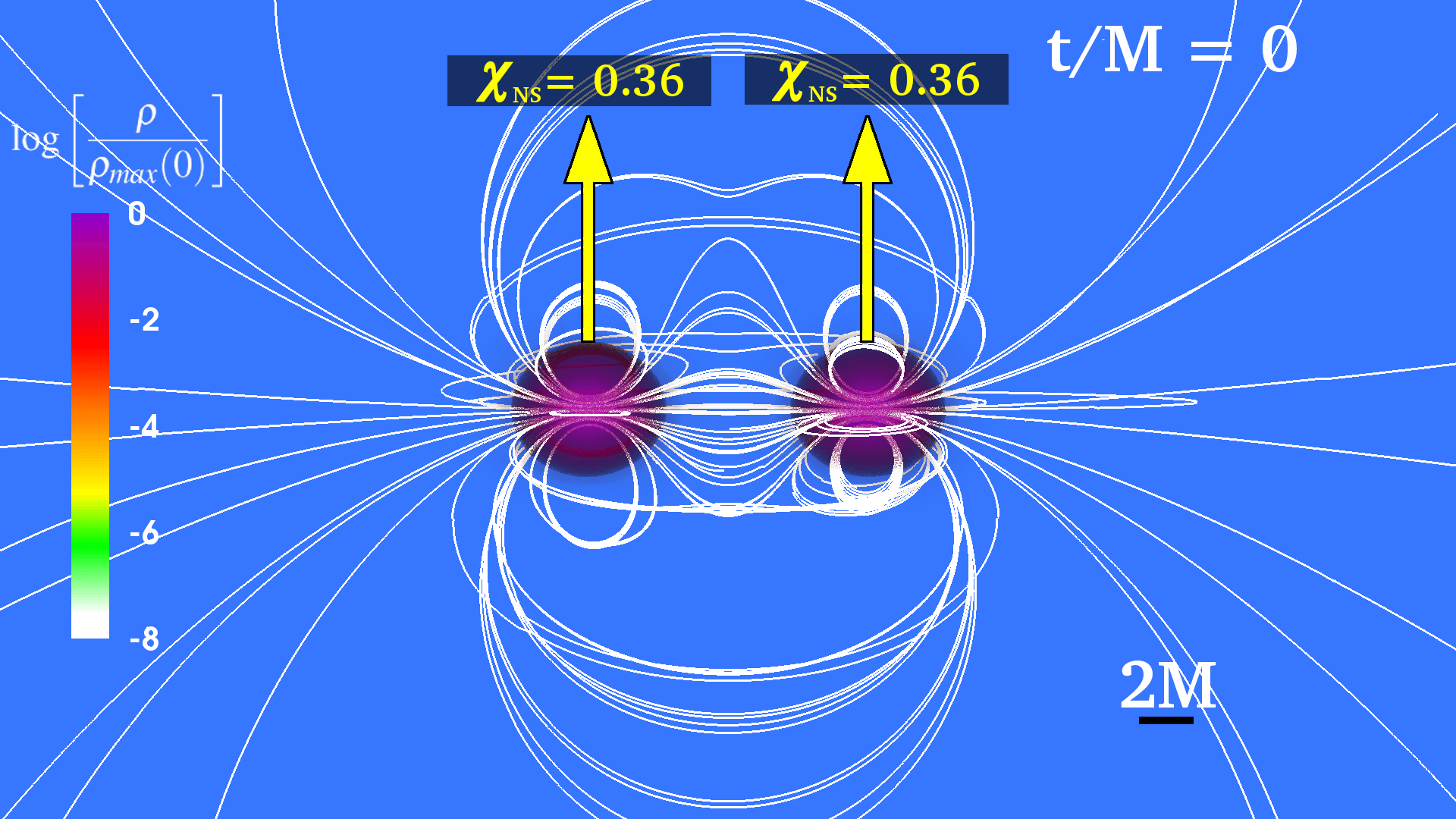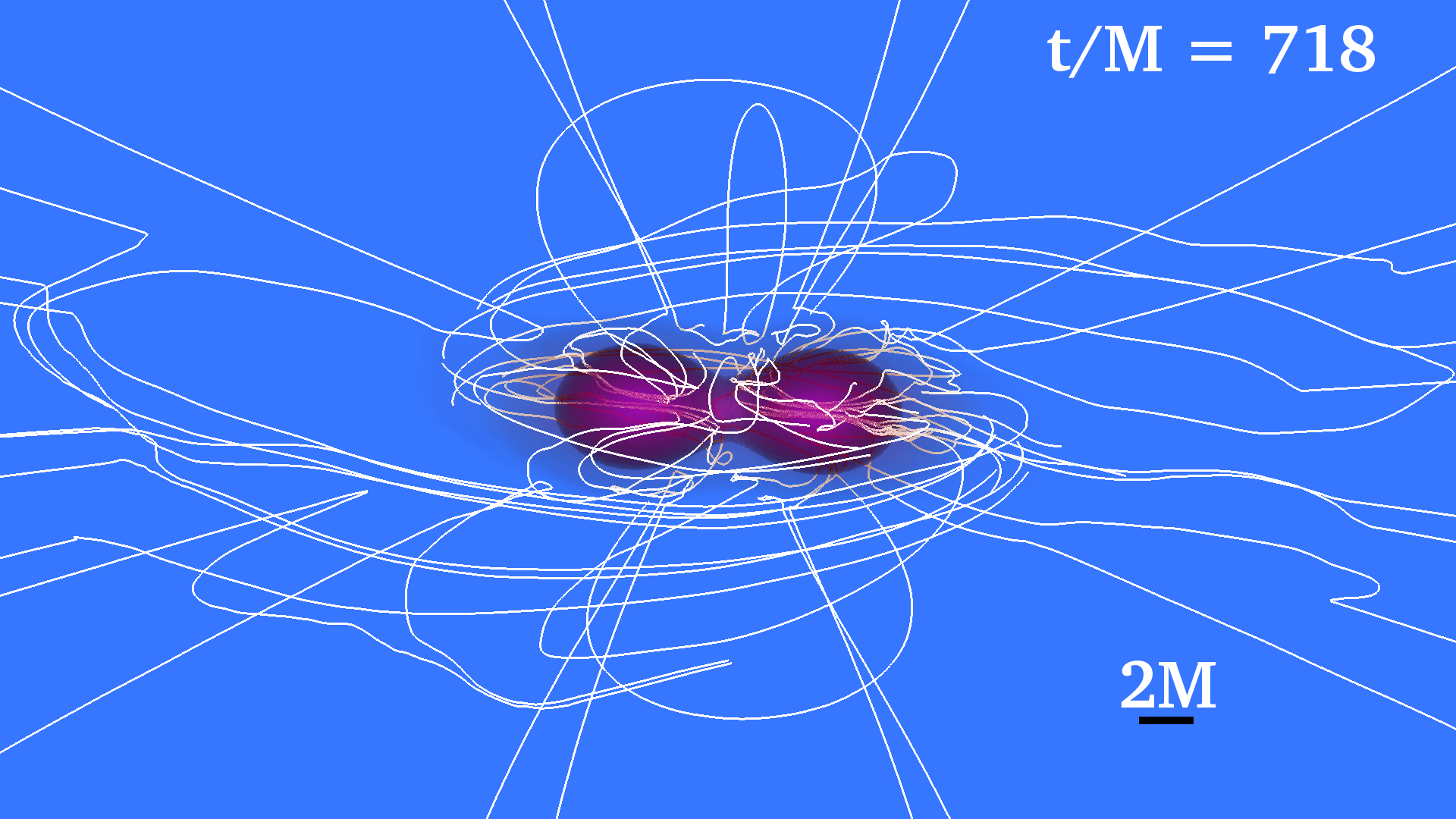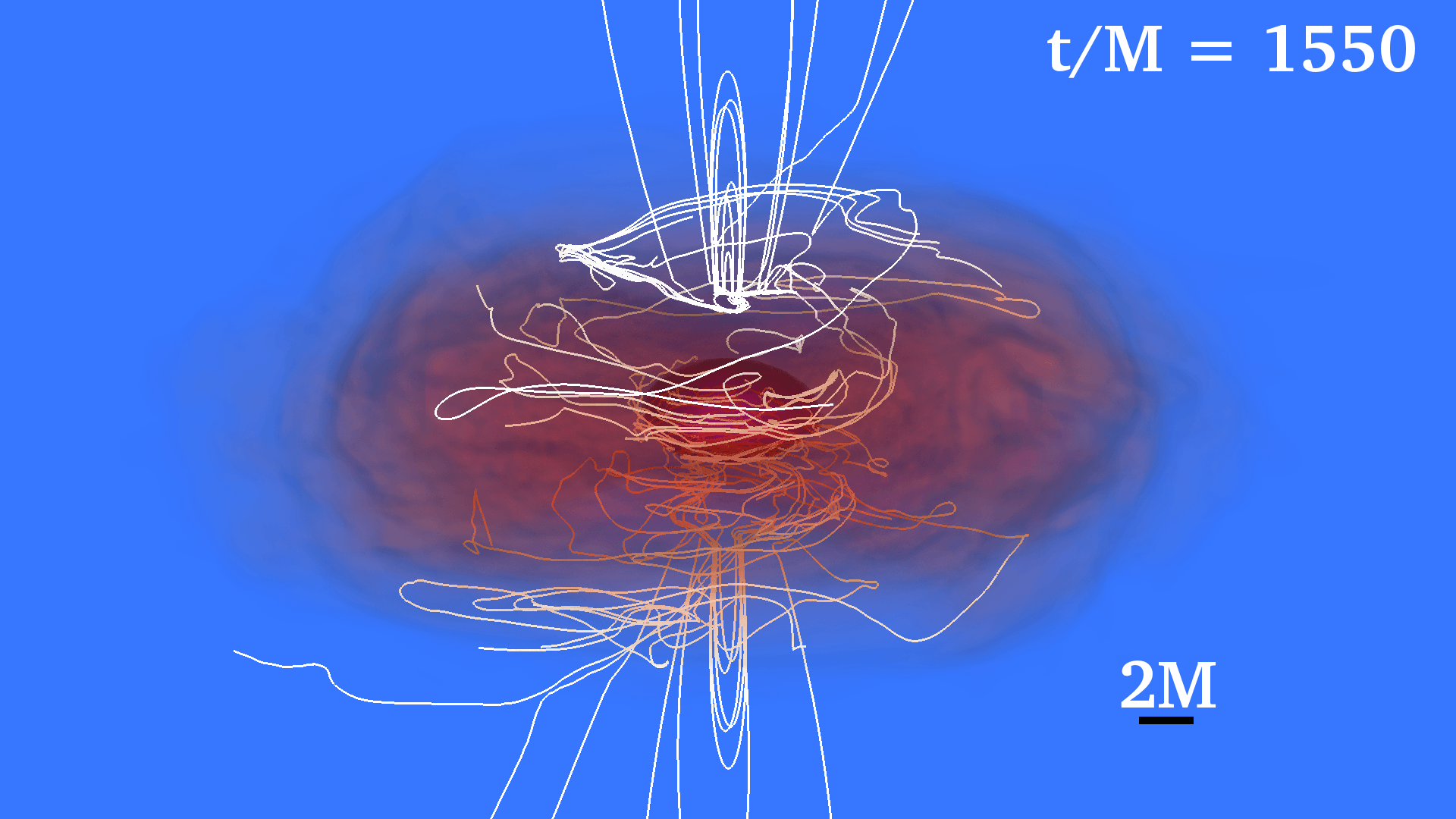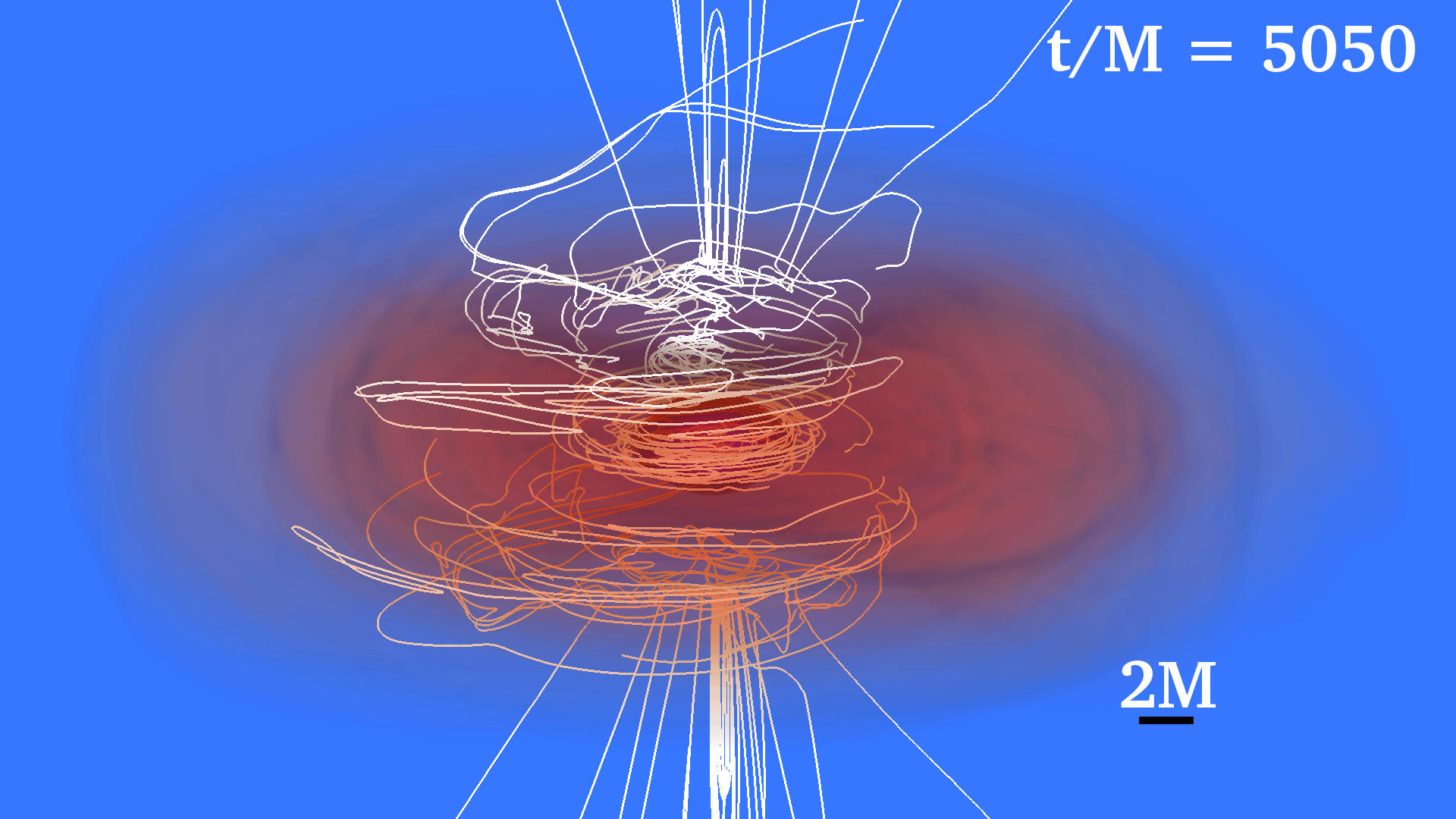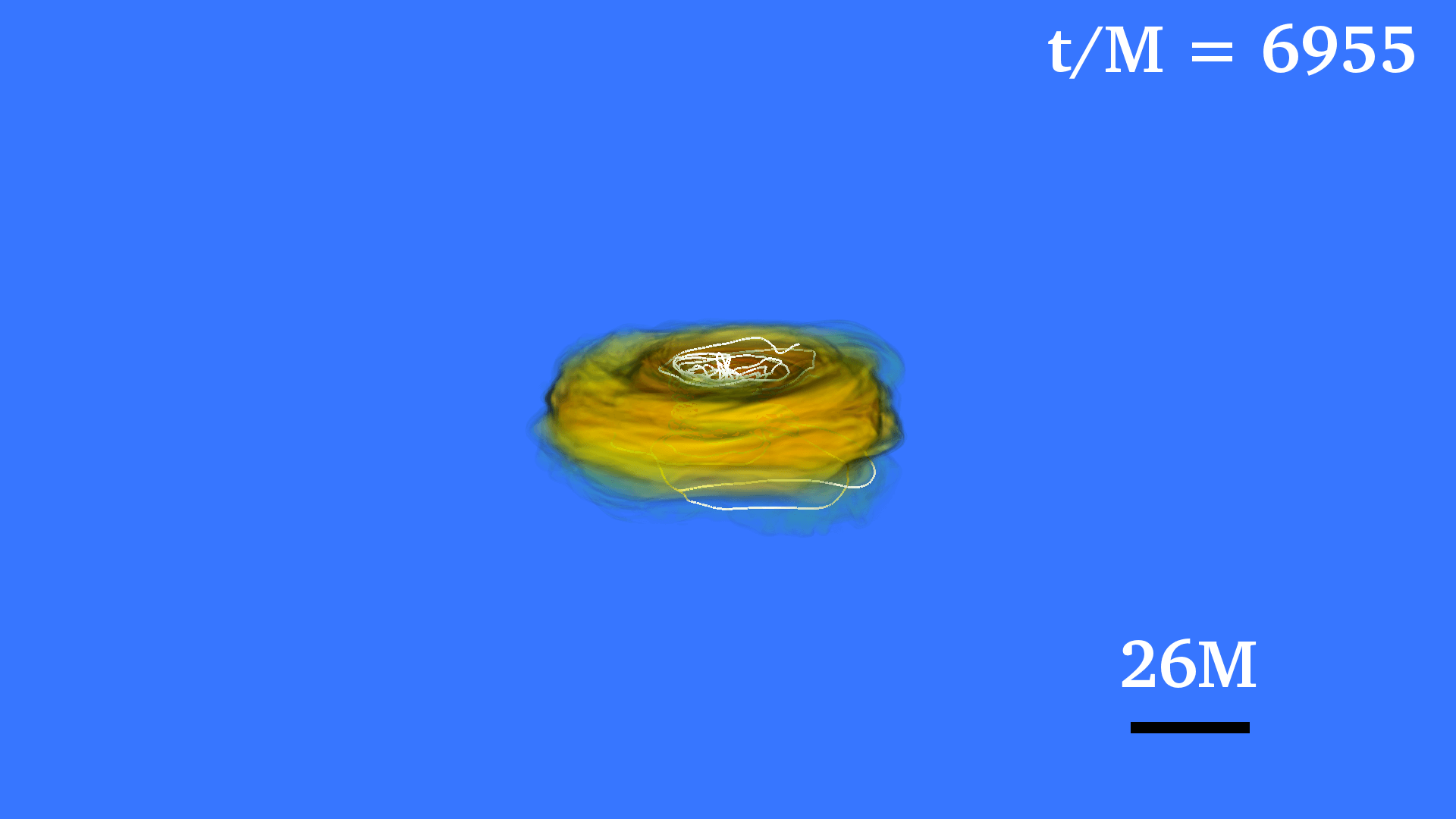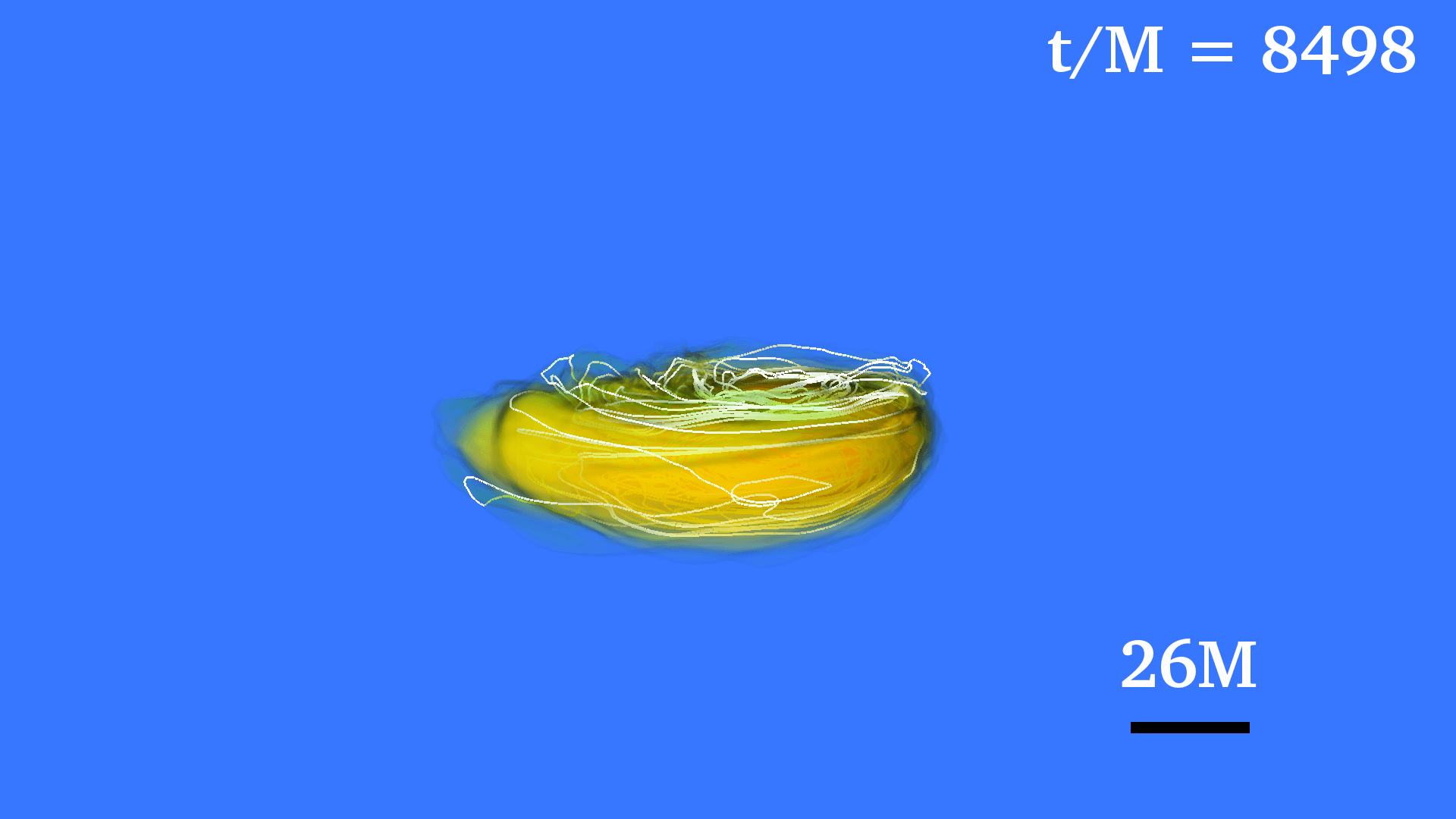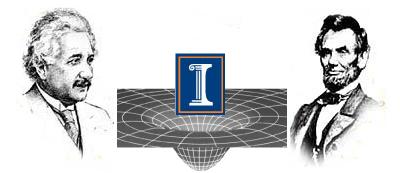Per-Per Case

Density Evolution
Here, we analyze the (fully 3D) evolution of the binary in which the dipole magnetic moment in the two stars is perpendicular to the direction of the total orbital angular momentum of the system (see top left panel). The stars collide at $t\simeq 620M\sim 8.7(M_{NS}/1.625M_\odot)\rm ms$, roughly $136M\sim 2.0(M_{NS}/ 1.625 M_\odot)\rm ms$ later than in the Ali-Ali case, forming a HMNS. We note that this transient is the more oblate remnant star of the cases, though the central angular velocity is similar in all of them. By $t-t_{mer}\simeq 5465M\sim 76.5 (M_{\rm NS}/1.625M_\odot)\rm$ms, the collapse is triggered. The HMNS collapses to a BH with mass $M_{\text{BH}}\sim 2.73M_\odot$. The bottom right panel displays the final configuration of the BH + disk remnant. We note that even after $t-t_{BH} \simeq 1965M\sim 27.5(M_{\rm NS}/1.625M_\odot)\rm ms$, there is still a dense cloud of fall-back material raining down into the BH remnant. Even after this time, we do not find any evidence of an outflow or large-scale magnetic field collimation. The reasons are that by this time there is still significant tidal debris above the BH and the magnetic energy isn't sufficiently strong enough to launch a jet or blow material away.
